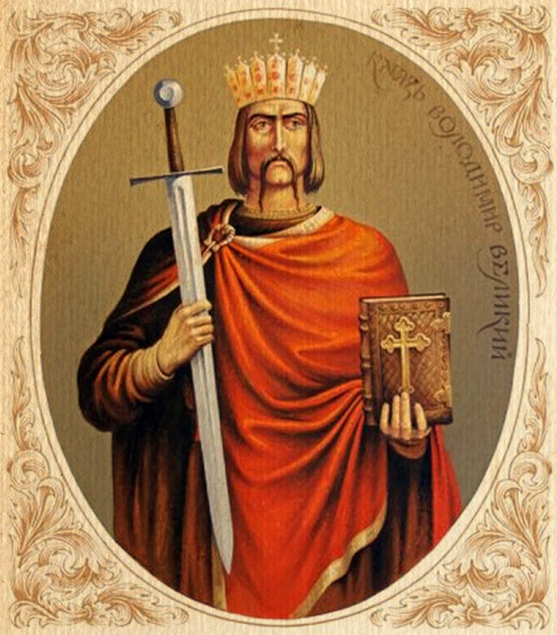This week, Ukrainians celebrated 1033 years since the adoption of Christianity. According to tradition, this took place in the summer of 988. Prince Volodymyr (or Vladimir or Valdimar), soon to become a saint, decided he needed organised religion to hold his vast realm together. To this end, he summoned emissaries representing the major monotheisms to his court. The great prince found Judaism to be too complicated while Islam banned alcohol which was an obvious no-no. This left the two major strains of Christianity at the time, the Catholic and the Orthodox.
Volodymyr went with Orthodoxy, no doubt the promise of marriage to a Byzantine princess having sweetened the deal. Had he opted otherwise, the history of not just Ukraine, Russia and Belarus, but perhaps also of Europe as a whole, might have been very different. However, Orthodoxy was probably always the front-runner, despite this rather amusing story. The Byzantine Emperor was still the regional great power and Volodymyr’s grandmother Olga had converted, although this did not extend to her subjects.
The day has been an official holiday in Ukraine since 2008. However, it can still be cause for contention. 34 percent of Ukrainians see themselves as belonging to the Kyiv patriarchate which became separate from Moscow in 2019, while 14 percent still look to the Moscow patriarchate. The rest see themselves are being Orthodox of no particular denomination or belonging to other Christian sects.
Putin has emphasised the Christianisation of Rus as an event that unites Russia and Ukraine and came to Kyiv to celebrate in 2013, before the present war started. Ukrainian president Zelensky, however, asked people to stay home to avoid contagion. The mayor of Kyiv did allow the Moscow-led event to take place on July 27th, with tens of thousands of people attending. The next day, the Kyiv patriarchate also held a march. There is now worry that the marching may have been a superspreader event, but participants claim to have faith that God will protect them.

Links:
https://jamestown.org/religion-as-a-hybrid-war-weapon-to-achieve-russias-geopolitical-goals/
BBC World Service – The Fifth Floor, Kyiv march: ‘Eucharist is our vaccine’


